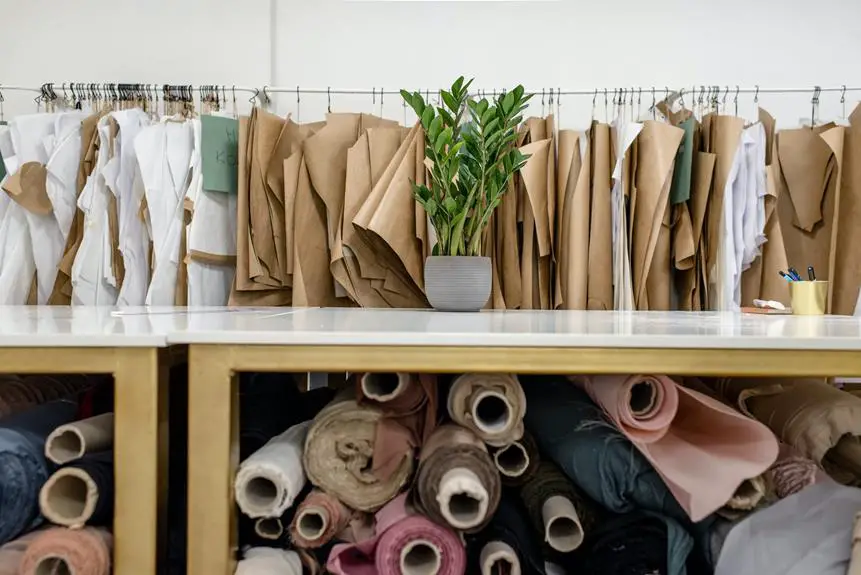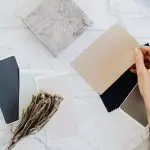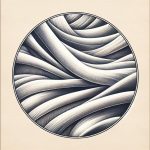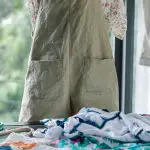Are you ready to unravel the mystery of poplin versus twill fabric? Choosing the right fabric is like selecting the perfect ingredient for your favorite recipe. Each has its own unique texture, drape, and versatility.
Understanding the characteristics and differences between poplin and twill will empower you to make informed decisions about your wardrobe. From the crisp, smooth feel of poplin to the distinctive diagonal weave of twill, each fabric offers distinct advantages.
Let's delve into the world of textiles and discover which fabric is the perfect fit for you.
Key Takeaways
- Poplin is tightly woven and has a smooth texture, while twill has a distinctive diagonal weave pattern.
- Poplin is versatile and ideal for shirts, dresses, and skirts, while twill is perfect for creating sturdy garments and workwear.
- Twill fabric offers exceptional durability, hides stains well, and adds sophistication to workwear.
- Poplin fabric has a polished and refined look, while twill offers a more textured appearance. Both fabrics are durable and suitable for different occasions and climates.
Characteristics of Poplin Fabric
When choosing fabric, consider that poplin is a tightly woven, durable material suitable for a variety of garments. Its smooth texture and breathability make it a popular choice for dress shirts, blouses, and lightweight jackets. The tight weave of poplin results in a fabric that's strong and resistant to wrinkles, making it a practical option for everyday wear.
The smooth texture of poplin not only gives it a polished appearance but also makes it comfortable to wear. This fabric drapes well, providing a tailored look without feeling stiff or restrictive. Its breathability allows for air circulation, making it ideal for warm weather clothing. Poplin's ability to keep you cool and comfortable sets it apart from heavier, less breathable fabrics.
In addition to its suitability for warm weather garments, poplin's durability makes it a versatile choice for a range of clothing items. From formal attire to casual wear, poplin's strength and resilience ensure that the garments made from it will withstand regular wear and washing. Whether you're looking for a sophisticated dress shirt or a relaxed summer blouse, poplin's characteristics make it a dependable and stylish option.
Characteristics of Twill Fabric
Twill fabric's distinctive diagonal weave sets it apart from poplin, offering you a durable and versatile option for a wide range of garments. The weaving technique of twill fabric involves interlacing the yarns in a way that creates a pattern of diagonal parallel ribs, which gives the fabric its unique look and feel. This diagonal weave also makes twill fabric strong and resilient, as the diagonal structure helps prevent tears and wrinkles, making it an excellent choice for clothing that needs to withstand regular wear and tear.
Moreover, twill fabric construction results in a dense and sturdy material that drapes well, making it suitable for tailored garments such as trousers, suits, and jackets. The diagonal pattern also gives twill fabric a soft, smooth texture, adding to its appeal for both casual and formal wear. Additionally, the fabric's versatility allows for various finishes, weights, and fiber compositions, providing a wide array of options to suit different preferences and needs.
Uses of Poplin Fabric
If you want a fabric that's versatile and suitable for any occasion, poplin is the way to go. Whether you're dressing up for a formal event or keeping it casual for a day out, poplin has got you covered.
Its smooth and lightweight nature makes it an ideal choice for shirts, dresses, and even skirts, giving you a polished yet comfortable look.
Poplin for Formalwear
Poplin fabric is a versatile choice for formalwear, offering a crisp and smooth texture that complements various styles and occasions. When considering poplin for formal attire, keep in mind its fabric properties and how they align with your needs.
Here are three ways you can leverage poplin for formalwear:
- Classic Suiting: Poplin's lightweight and breathable nature makes it an excellent choice for tailored suits, ensuring comfort during formal events while maintaining a polished look.
- Sharp Dress Shirts: The smooth finish of poplin fabric makes it ideal for creating sophisticated dress shirts, adding a touch of refinement to your formal ensemble.
- Elegant Dresses and Skirts: For formal events or office wear, poplin fabric can be used to craft elegant dresses and skirts, offering a timeless yet modern appeal.
Consider incorporating poplin into your formalwear collection for a versatile, refined look.
Poplin for Casualwear
When dressing for casual occasions, consider incorporating poplin fabric into your wardrobe for its versatility and comfort. Poplin is an excellent choice for casualwear due to its lightweight and breathable nature, making it ideal for warmer weather. It drapes well, providing a relaxed yet polished look for a variety of casual settings.
Unlike denim, poplin offers a smoother and more refined appearance, adding a touch of sophistication to your casual outfits. Whether it's a poplin button-up shirt for a weekend brunch or a poplin dress for an outdoor gathering, this fabric effortlessly combines comfort with style.
Its ability to maintain a crisp, clean look throughout the day also sets it apart from denim, making poplin a go-to choice for those seeking comfort without sacrificing a smart appearance.
Uses of Twill Fabric
Twill fabric is a durable workwear material that's perfect for creating sturdy garments that can withstand heavy use.
Its distinctive diagonal weave pattern adds a touch of visual interest to the fabric, making it versatile for different types of clothing, from casual pants to structured jackets.
Whether you're looking for a reliable fabric for everyday wear or need something that can handle tough working conditions, twill is a great choice for creating long-lasting and stylish apparel.
Durable Workwear Fabric
For durable workwear, you'll want to consider the benefits of twill fabric. Twill fabric is known for its exceptional durability and fabric strength, making it an ideal choice for demanding work environments.
Here's why twill fabric is perfect for durable workwear:
- Long-lasting Wear: Twill fabric's unique weaving pattern creates a strong, resilient material that can withstand the rigors of daily use, making it perfect for workwear that needs to endure tough conditions.
- Resistance to Wear and Tear: The diagonal weave of twill fabric not only adds strength but also provides resistance to tears and abrasions, ensuring that your workwear remains intact even in challenging work settings.
- Easy Maintenance: Twill fabric is easy to maintain, requiring minimal care while retaining its durability, making it a practical choice for workwear that needs to endure heavy use.
When it comes to durable workwear, twill fabric stands out as a reliable and sturdy option.
Diagonal Weave Pattern
Consider the advantages of twill fabric's diagonal weave pattern for your workwear needs, as it offers exceptional durability and strength in demanding environments. The diagonal weave of twill fabric provides several benefits, making it a popular choice for workwear. The unique weaving technique creates a strong, durable fabric that resists wrinkles and hides stains well, making it ideal for rugged, everyday use. Additionally, the diagonal lines in the weave pattern give twill fabric a visually appealing texture, adding a touch of sophistication to workwear garments. Whether you're in a workshop, on a construction site, or in a demanding outdoor environment, twill fabric's diagonal weave offers both resilience and style.
| Diagonal Weave Benefits | Visual Appeal |
|---|---|
| Exceptional durability | Sophisticated texture |
| Strength in demanding environments | Hides stains well |
| Resists wrinkles | Rugged, everyday use |
Versatile for Different Garments
When choosing fabric for your garments, it's important to understand how twill fabric's versatility makes it suitable for a wide range of clothing items.
Here are three ways twill fabric's versatility compares to other fabrics and how it's suitable for different garments:
- Durability: Twill fabric's diagonal weave pattern makes it more resistant to wrinkles and more durable than other fabrics, making it ideal for sturdy workwear like jackets and pants.
- Texture and Weight: The unique texture and medium-to-heavy weight of twill fabric make it perfect for creating structured garments such as blazers, suits, and coats.
- Casual and Formal Wear: Twill fabric's ability to adapt to different finishes makes it suitable for both casual and formal wear, from everyday shirts and dresses to elegant evening wear.
Poplin Vs Twill: Aesthetic Differences
You frequently see poplin and twill fabrics used in different types of clothing, and you may wonder about the aesthetic differences between them. When it comes to the aesthetic differences between poplin and twill fabrics, both offer unique visual and tactile characteristics. Understanding these differences can help you make more informed choices when selecting garments or fabrics for your sewing projects. Below is a table summarizing the aesthetic variances between poplin and twill fabrics:
| Aesthetic Feature | Poplin Fabric | Twill Fabric |
|---|---|---|
| Texture | Smooth and flat with a subtle sheen | Diagonal weave pattern, slightly ribbed |
| Color Options | Bright and vibrant colors | Rich, deep colors with a matte finish |
Poplin's smooth and flat texture with a subtle sheen gives off a polished and refined look, making it ideal for office wear or dress shirts. On the other hand, twill's diagonal weave pattern and slightly ribbed texture offer a more textured and substantial appearance, often used in casual jackets and pants. Additionally, poplin fabric tends to showcase bright and vibrant colors, while twill fabric generally features richer, deeper colors with a matte finish, adding to its versatile aesthetic appeal.
Poplin Vs Twill: Comfort and Durability
Selecting between poplin and twill involves considering their comfort and durability. Both fabrics have distinct features that impact how they feel and hold up over time.
Here are three key factors to consider when comparing the comfort and durability of poplin and twill:
- Comfort and Breathability: Poplin is known for its smooth, lightweight feel, making it a great choice for warm weather. Its tight weave provides excellent breathability, allowing air to circulate and keep you cool. On the other hand, twill is slightly heavier and known for its diagonal weave, which gives it a soft texture. While twill may be slightly less breathable than poplin, it still offers good comfort, especially in cooler temperatures.
- Longevity and Wearability: Poplin, due to its tight weave, tends to be durable and resistant to pilling, making it suitable for frequent wear. It holds up well over time and maintains its crisp appearance, making it a reliable choice for everyday garments. Twill, with its characteristic diagonal weave, is also durable and wear-resistant, making it a versatile option for a range of clothing items.
- Versatility: Both poplin and twill are versatile fabrics that can be used for a variety of garments, from dress shirts and blouses to trousers and skirts. Their comfort and durability make them suitable for different occasions and climates, providing options for both casual and more formal attire.
Poplin Vs Twill: Making the Right Choice
To make the right choice between poplin and twill, consider the specific garment and the intended use. When choosing fabric, it's crucial to assess the fabric texture and durability.
Poplin, with its smooth and crisp texture, is an excellent choice for dress shirts, blouses, and lightweight dresses. Its tightly woven construction provides a breathable and lightweight feel, making it suitable for warm weather.
On the other hand, twill's characteristic diagonal weave produces a durable and wrinkle-resistant fabric, making it ideal for pants, jackets, and workwear. The diagonal texture also adds a subtle visual interest to the fabric. If you're looking for a fabric that can withstand heavy use and maintain its appearance, twill is a reliable option.
When making your decision, consider the demands of the garment's purpose. For formal or professional attire, poplin's smooth finish may be more suitable, while twill's durability and rugged texture make it a great choice for casual or workwear.
Frequently Asked Questions
Can Poplin and Twill Fabrics Be Easily Dyed or Printed With Patterns?
Yes, poplin and twill fabrics can be easily dyed or printed with patterns. Dyeing techniques like vat dyeing and direct dyeing work well, and printing methods such as screen printing and digital printing yield excellent results.
Are There Any Specific Care Instructions for Maintaining the Quality of Poplin and Twill Fabrics?
To maintain poplin and twill fabrics, follow specific care instructions like gentle washing, avoiding high heat, and minimal ironing. Both fabrics can be dyed or printed, offering color customization and printing options to suit your style.
How Do Poplin and Twill Fabrics Compare in Terms of Environmental Sustainability and Eco-Friendliness?
When it comes to the environmental impact, both poplin and twill fabrics have their own sustainability practices. Poplin tends to use less material during production, while twill often requires more water and energy.
Are There Any Specific Cultural or Historical Significance Associated With Poplin and Twill Fabrics?
Cultural significance of poplin and twill fabrics lies in their historical use in various traditional clothing and ceremonial attire. Poplin was favored for its lightweight, while twill was used for its durability and rich texture.
Are There Any Unique or Specialized Uses for Poplin and Twill Fabrics That May Not Be Commonly Known?
When it comes to poplin and twill fabrics, there are specialized uses that may surprise you. From innovative designs to unconventional applications, these fabrics can be creatively utilized in ways that may not be commonly known.
- Does Chiffon Fabric Stink - July 15, 2025
- Does Chiffon Fabric Affect the Economy - July 15, 2025
- Does Cotton Fabric Have a Nap - July 15, 2025







